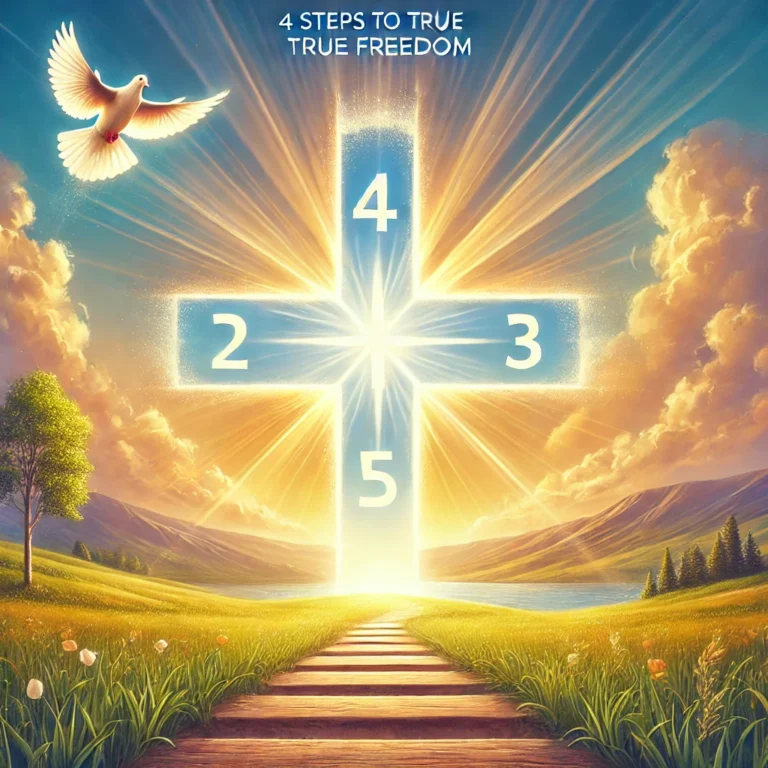
Santeria
– Origins: Santeria merges African Yoruba beliefs with Spanish Catholicism, stemming from the transatlantic slave trade.
– Deities (Orishas): Central to its faith are Orishas, divine beings that intercede in human affairs.
– Rituals: Involves animal sacrifices, drumming, dancing, and chanting to communicate with Orishas.
– Offerings: Fruits, vegetables, and cooked meals are presented to the Orishas.
– Initiation: Involves a series of rites to bond the believer with a specific Orisha.
:
Santeria, also known as Regla de Ocha, is a syncretic religion combining the African Yoruba religion with elements of Catholicism, originating among enslaved Africans in the Caribbean. Practitioners worship and communicate with Orishas, powerful deities believed to influence human destiny. Devotional practices include elaborate rituals featuring animal sacrifices, spirited dance, rhythmic drumming, and chanting, intended to invoke the Orishas for guidance, support, and intervention. Offerings of food and drinks are regularly made to honor these deities, with initiation ceremonies marking the devotion and connection between a follower and their chosen Orisha.
In Santeria, the deities are known as Orishas. Each Orisha has its own domain, attributes, and personality, often associated with natural elements and human endeavors. Here are some of the key Orishas in Santeria:
- Obatala: The Orisha of creation, King of the white cloth, associated with purity, wisdom, and peace. Often considered the father of all Orishas and humans.
- Elegua (Eshu): The trickster and messenger Orisha, guardian of crosswords and gateways. He is the first and last to be honored during any ceremony and grants or denies permission for other Orishas to participate.
- Ogun: The warrior Orisha of iron, war, labor, and technology. He is associated with strength, tools, and weapons.
- Ochosi: The Orisha of hunting, justice, and the forest. He represents discipline and focus and is often called upon for legal matters.
- Orunmila (Ifa): The Orisha of wisdom, knowledge, and divination. He guides followers through the Ifa divination system and is central to understanding one’s destiny.
- Yemaya: The motherly Orisha of the sea, motherhood, and protector of women and children. She embodies nurturing and compassion.
- Oshun: The Orisha of love, fertility, beauty, and rivers. Known for her sensuality and generosity, she is often associated with wealth and romance.
- Shango (Changó): The powerful Orisha of thunder, lightning, fire, and dance. A warrior king is known for his bravery, justice, and fiery temper.
- Babalu Aye The Orisha of healing, sickness, and disease. Often called upon for health issues and protection from epidemics.
- Oya: The fierce Orisha of winds, storms, and the cemetery. She represents change, transformation, and the breaking of barriers.
Each Orisha has specific symbols, colors, offerings, and rituals associated with them, reflecting their unique aspects and the path they influence within the lives of their followers.
Brujeria:
Bullet Points:
– Origins: Rooted in ancient Iberian (Spanish/Portuguese) folk traditions, enriched with indigenous and African influences in Latin America.
– Practices: Encompasses a wide range of magical practices, including spells, divination, and herbal medicine.
– Intention: Can be used for both benevolent purposes (healing, protection) and malevolent ones (curses, hexes).
– Spiritual Beings**: Includes interactions with saints, spirits, and supernatural entities.
– Secretive: Often practiced discreetly due to stigmatization and taboo.
Brujeria, deeply ingrained in the folk traditions of Spain and Portugal, has evolved significantly throughout Latin America, integrating indigenous and African elements. Brujeria practices encompass diverse magical techniques, such as spell-casting, divination, and herbalism, which can be employed for healing, protection, or even harm. Often viewed with suspicion, Brujeria operates in a dual capacity—serving both as a means of aid and a tool of malice, depending on the practitioner’s intentions. The faith involves interactions with saints, spirits, and various supernatural entities, though it often remains shrouded in secrecy due to societal stigma.
The term “Brujería”refers to a broad spectrum of witchcraft and folk magic traditions found primarily in Latin American and Caribbean cultures. Within these traditions, a variety of deities, saints, spirits, and other supernatural entities are revered, commonly drawing on syncretic blends of indigenous, African, and Catholic influences. Key elements can vary significantly depending on the specific regional practices and the personal beliefs of practitioners. Here are some of the more commonly revered figures in different forms of Brujería:
- Catholic Saints: In many Brujería traditions, there is a strong syncretism with Catholicism. This includes the veneration of Catholic saints, who are often called upon for protection, guidance, or intervention.
– **San Miguel Arcángel (St. Michael the Archangel)**: Invoked for protection against evil spirits and for battle.
– **La Virgen de Guadalupe (Our Lady of Guadalupe)**: A form of the Virgin Mary, widely revered for her compassion and miracles.
- Orishas: Drawn from Yoruba religion and prevalent in Afro-Caribbean practices like Santería and Candomblé, these deities are often integrated into Brujería.
– Oshun: The Orisha of love, fertility, and rivers, often syncretized with the Virgin Mary.
– Elegua: The Orisha of crossroads, communication, and beginnings, sometimes syncretized with St. Anthony or St. Michael.
- Indigenous Deities: Indigenous elements from pre-Columbian belief systems also find their way into Brujería practices.
– Quetzalcoatl: An Aztec deity associated with wind, air, and learning.
– Pachamama: An Andean goddess of fertility, agriculture, and the earth.
- Spirits or Ancestors: Many practitioners of Brujería also incorporate ancestor worship or call upon spirits who are believed to have unique powers or insights.
– Espíritus: Spirits called upon in various rituals, often personalized according to one’s spiritual guides or family heritage.
- Various Figures of Syncretic Mix: Figures like **Santa Muerte** (Holy Death/Our Lady of the Holy Death) who is a personification of death worshiped predominantly in Mexico, blending Catholic, indigenous, and folk religions. She is called upon for protection, healing, and safe passage to the afterlife.
- Ñañigos or Lucumí spirits: Derived from the Abakuá, an Afro-Cuban fraternal society, which are also honored within some traditions of Brujería.
- Folk Saints: Saints not officially recognized by the Catholic Church but popular among communities.
– Maximón: A folk saint in Guatemala who combines aspects of indigenous Maya deities, Spanish conquistadors, and biblical Judaic elements.
– Gauchito Gil: An Argentine folk saint revered for his role as a Robin Hood-like figure who defended the poor.
Brujería is characterized by its fluidity and adaptability, often integrating new beliefs and practices as they come into contact with different cultural influences. Therefore, the deities and other supernatural figures revered can vary widely depending on the specific traditions and individual practitioners involved.
Voodoo:
Bullet Points:
– Origins: Originates from West African Vodun, altered through the transatlantic slave diaspora, mainly in Haiti and New Orleans.
– Deities Loa: Centers on the worship of Loa, spiritual intermediaries with distinct personalities and domains.
– **Rituals**: Feature drumming, dance, singing, and spirit possession; involve altars and offerings.
– Syncretism: Blends elements with Catholic saint veneration.
– Community: Emphasis on community cohesion and mutual assistance.
Voodoo, evolving from West African Vodun traditions via the transatlantic slave trade, primarily flourishes in Haiti and New Orleans. It centers on the worship of Loa, intermediary spirits each governing different aspects of life and nature. Voodoo ceremonies are vibrant events, characterized by rhythmic drumming, dancing, singing, and sometimes spirit possession, aiming to communicate with and honor the Loa. Through syncretism, Voodoo integrates Catholic elements, such as the veneration of saints. Emphasizing strong community bonds, Voodoo practices often function as communal participatory events fostering unity and mutual support among practitioners.
In Voodoo (or Vodou), the deities are known as “Loa” (also spelled Lwa). These spirits serve as intermediaries between the Supreme Creator and humans. Each Loa has its own distinct personality, domain, symbols, rituals, and associated offerings. Here are some of the primary Loa in Voodoo:
- Bondye (Bon Dieu): The Supreme Creator, considered distant and not directly involved in human affairs. Bondye means “Good God” in Creole/French.
- Papa Legba: The guardian of the crossroads, the first Loa invoked in rituals. He is a gatekeeper who permits contact with other Loa and is associated with communication and language.
- Ezili Freda (Erzulie Freda): The Loa of love, beauty, luxury, and femininity. She is often associated with wealth, and her attributes are similar to those of the Roman Catholic Saint, Our Lady of Sorrows.
- Ezili Dantor (Erzulie Dantor): The fierce and protective Loa of motherhood, a defender of women and children. She is associated with the Virgin Mary as depicted in the painting of Our Lady of Czestochowa.
- Ogun: Similar to Ogun in Santeria, this Loa is a warrior, and is associated with iron, war, labor, and technology. He is a patron of blacksmiths, soldiers, and laborers.
- Baron Samedi: The Loa of death, cemeteries, and resurrection. He is often depicted with a top hat, black tail coat, dark glasses, and cotton plugs in the nostrils, resembling a corpse dressed for burial. He is known for his loud, defiant, and sometimes vulgar behavior.
- Maman Brigitte: The female counterpart of Baron Samedi, associated with death and cemeteries. She is invoked for protection and justice and is known for her fearless nature.
- Damballa (Damballah or Danbala): The serpent Loa represents fertility, wisdom, and life. He is associated with rain and water, and his worship often involves offerings of white food like eggs and milk.
- Ayida-Wedo (Aida Wedo): Also known as the Rainbow Serpent, she is the Loa of fertility and a companion to Damballa. She represents continuity and the interconnectedness of the heavens and earth.
- Ghede: A family of Loa associated with death and fertility, with Baron Samedi as their leader. The Ghede spirits, including Ghede Nibo and Ghede Limbo, play intermediary roles between the living and the dead, often characterized by their playful, sensual, and irreverent demeanor.
- Papa Ghede: Often considered as a prominent member of the Ghede family, Papa Ghede is a Loa of death and sexuality, and he is a psychopomp, guiding souls of the deceased to the afterlife.
Each Loa has specific altars, symbols, and offerings that adherents use to honor and commune with them. The practice of Voodoo integrates a blend of African traditions, Catholicism, and indigenous beliefs, creating a rich and diverse spiritual system.




